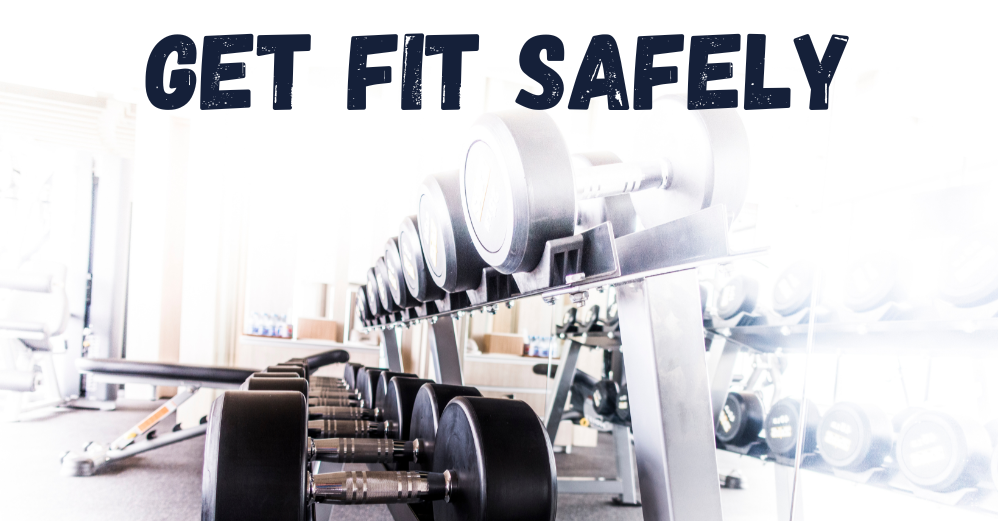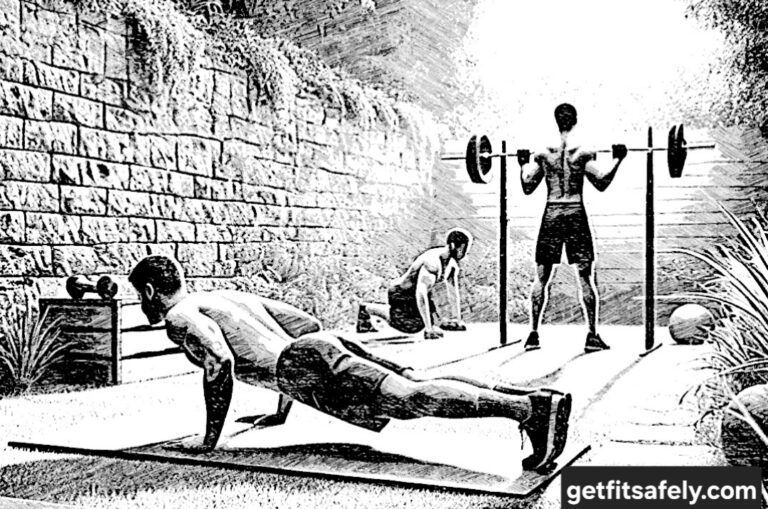Ok, let’s talk about it
The back lever is one of those exercises that makes you look like a zen ninja floating in midair.
You see it on Instagram, think “awesome,” give it a try… and realize you’re not a ninja.
You’re a banana.
Literally.
Because the most common issue when attempting a back lever is excessive back arching.
An arch that looks more like a yoga pose than a calisthenics routine.
And the worst part (so to speak) is that many people don’t even realize it’s happening.
So… how do you know if you’re arching too much?
And more importantly, why does it happen?
Let’s dive in—without arching the back.
It looks straight… but it’s a mess: the betrayal of perception

I know it, I’ve been there too.
You hang, tense everything, clench your teeth, glutes, and hope…
…and in your head, you’re flying like an Olympic athlete.
Then you watch the video.
😬
A human harp. A banana with shoulder blades.
Proprioception—your awareness of your body in space—is unreliable in these static, inverted positions.
Especially if you’re holding your breath and focusing on not dying.
The solution? Record yourself. Always.
Every single attempt. Even the ugly ones. Especially the ugly ones.
And watch closely:
- Is your pelvis lower than your shoulders?
- Does your lower back visibly curve downward?
- Do your ribs look like they’re gasping for air?
If you look more like a hammock than a straight line… there’s your answer.
And no, it’s not just an aesthetic issue. It’s a structural red flag.
Why you’re arching (spoiler: it’s not all your fault)
Your body is clever. Too clever, sometimes.
When something can’t handle the load, it finds another way. Even if that way is a biomechanical disaster.
In the back lever, you’re demanding a lot from:
- Core (deep abs, obliques, transverse abdominis)
- Shoulders in extension
- Glutes and posterior chain
If the abs aren’t doing their job, who steps in?
Exactly: the lower back.
It stretches, it flattens out, and takes on all the load that should be distributed.
That’s called compensation, and it does it even when you don’t ask.
Add to that:
- Hip flexors that are too tight
- Glutes sleeping like hibernating pandas
- Poor awareness of neutral pelvis position
…and that’s why you look like a human boomerang.
Arching is easier than staying tight. But just because it’s easier doesn’t mean it’s right.
“But I can hold it longer this way…” – The trap of false stability
Sound familiar?
Good.
You tried to “hold” the position even though you knew it wasn’t perfect.
And yes, with that arch, you hold longer.
You feel stable.
Solid. Safe.
Too bad that stability is an illusion.
Training back levers with an excessive arch means reinforcing a mistake.
You’re not building strength in the correct position.
You’re just teaching your body how to survive crooked.
The day you try a more advanced version—straddle, full lever—your foundation will betray you.
And you might even get hurt.
Spoiler: your lower back doesn’t like being messed with.
How to fix it without losing your mind

I get it, going backward isn’t sexy.
But it’s the only way to actually move forward.
Here’s what worked for me, and for many others who were tired of looking like a flying banana:
- Perfect tuck back lever
Don’t rush out of it.
Active glutes, tight core, depressed scapulae, posterior pelvic tilt.
Sounds easy. It’s not. - Use resistance bands—smartly
Not to relax, but to experience a proper position with less load.
If you get too comfy in the band, you’re not working—you’re rocking yourself to sleep. - Train the straight line… on the ground
Hollow body hold, superman hold, posterior tilt plank, static stick positions.
If you can’t keep a line on the floor, you won’t keep it in midair. - Video, video, and more video
Not just “watched once.”
Watch it again. Compare it with others.
Ask for feedback. Brutal feedback. Like you’re your own worst coach. - Point your toes. Always.
No, it’s not just a detail.
When you point your toes, your whole body tightens: calves, hamstrings, glutes, core.
Small move, huge impact.
And then, speaking from experience… slow down.
Don’t chase aesthetic progress at the cost of technical progress.
Because you know what’s truly satisfying?
When you look back at the video and say:
“Finally, it’s STRAIGHT.”
And now put your pride aside
Let’s have a real talk.
If you’re trying the back lever just to post it on Instagram, you risk getting hurt for a virtual clap.
Is it worth it?
Training properly takes humility.
Going back.
Reviewing everything. Accepting that your position sucked.
And starting over.
But that’s where real strength is built.
The kind that doesn’t bail after 5 seconds.
The kind that makes you grow—not just as an athlete, but as a person who respects their body.
And you know what?
When you finally nail it—that clean back lever, stiff as a board…
…you don’t even need to post it.
You keep it for yourself.
Because it’s yours.
You earned it.
What you need before you start working on the back lever
Okay, I don’t want to be a buzzkill… but if you can’t hold a plank for 30 seconds without shaking like a raw noodle, maybe it’s better to postpone the back lever.
To tackle it with some dignity (and safety), you need a few basic prerequisites.
And no, you don’t need to be a Russian gymnast. But you can’t be a desk sloth either.
Here’s what you should already have under control:
- Scapular control
Being able to retract (pull toward the spine) and depress (pull downward) your shoulder blades is crucial to protect your shoulders during the entire movement. - Posterior pelvic tilt plank
Not the usual saggy plank: here you push your pelvis forward and squeeze your glutes to train the spine to stay neutral and stable. - Hollow body hold (20–30 sec)
On the floor, back glued to the ground, tight core, arms and legs lifted and straight. Essential for building the “line” of the back lever. - Tuck planche or advanced frog stand (15–20 sec)
These exercises teach you to support bodyweight through pushing, improving shoulder and upper body strength. - Controlled skin the cat
Moving from a vertical hang to full rotation behind the back on rings or bar. Great for mobilizing and strengthening shoulders in extension. - Shoulder extension mobility
If you can’t bring your arms behind your body without lifting your shoulders, you’re at risk of over-arching and joint stress.
The most common (and sneaky) beginner mistakes that slow everything down
Okay, we’ve all been there.
That phase where you feel strong, motivated, fired up… and then you stall for weeks because you’re doing things that seem right, but are actually sabotaging you.
Here’s a list of frequent mistakes I see (and have made myself), not just technical errors, but mindset traps when training the back lever:
1. Training “by feel” without knowing what to feel
Many people just hang and try to “feel” the back lever, but have no idea what they should be feeling.
If you’re feeling everything in your arms and shoulders, and nothing in your core or glutes, you’re basically collapsing on yourself.
The body needs to work as a tight chain, not like a puppet with dangling legs.
2. Not resting between attempts
The back lever isn’t a metabolic exercise. It’s neuromuscular.
You need recovery. You need to breathe. You need focus.
Doing 5 attempts in a row “because I’m hyped today” only worsens your form and reinforces bad habits.
Rest for at least 60–90 seconds between each hold, even if it feels too long. Trust me.
3. Underestimating leg and foot tension
Legs are the most ignored part.
Many keep their torso tight but let their feet go floppy, knees bend, or ankles wiggle.
The body follows the ends.
If you let your legs go, everything falls apart.
Tighten your quads, point your toes, squeeze your thighs. Always. Even in the tuck.
4. Not knowing what to look for in videos
Everyone says “record yourself!” But few know what to actually watch.
It’s not enough to see if you’re “straight.”
Look for:
- Are shoulders aligned with hips?
- Is your pelvis sagging below the line?
- Is there shaking only in the arms (good) or also in the lower back (bad)?
- Are you entering/exiting the hold with control or jerky motion?
Watch the details, not just the Instagram-worthy freeze-frame.
5. Switching progressions every week
The “today I’ll try straddle, tomorrow back to tuck, next week full lever” syndrome.
You need consistency. A progression should be trained for weeks, not days.
It’s better to hold a clean 10-second tuck back lever for 4 weeks than play ping-pong between random shapes.
6. Copying others’ workouts without adapting them
What works for your buddy with broad shoulders and short limbs might not work for you with long arms and a heavy pelvis.
You need a personalized plan.
And if you do copy something from Instagram, copy from people who explain the why, not just the what.
7. Skipping specific joint warm-up
Another classic beginner mistake: hanging cold.
The back lever is high-risk for the shoulders, especially in extension.
You need band rotations, active mobility, scapular prep before any serious attempt.
Five minutes of activation is worth hours of clean progression.
And can save you months of discomfort.
In short?
Being a beginner isn’t the problem.
Getting stuck because of the same mistakes is.
If you can avoid even just two or three of these traps, you’ll speed up progress, improve your form, and enjoy the process.
Roadmap: how to achieve a perfect back lever (without going insane)
Here’s a real roadmap.
No 30-day miracles.
No “unlock your back lever in 2 weeks” YouTube titles.
This is real work.
Here’s a realistic 4 to 6-month plan for those starting with a solid base but no back lever experience.
Month 1–2: Foundation phase
- Extended planks with posterior pelvic tilt
Build basic stability and awareness of neutral pelvis.
Also train core endurance. - Hollow body hold + rocks
Alternate static holds and forward/backward rocking to reinforce the body line and strengthen the abdominal wall. - Superman hold + shoulder dislocates
Superman strengthens the back (lower back, glutes, lats); dislocates improve dynamic shoulder mobility using a stick or band. - German hang with support
Hanging position with arms behind the back and body relaxed.
Prepares joints to tolerate the shoulder extension required. - Skin the cat with scapular control
Same movement as before, now focused on scapular movement quality at each stage.
Month 3–4: Transition phase
- Tuck back lever (bar or rings)
First true attempt at the movement.
Knees to chest, tight back, squeezed glutes.
Start with short holds and increase gradually. - Negatives from skin the cat into tuck
Start from the “hanging behind” position and slowly lower into tuck back lever, controlling each phase.
Strengthens the whole front side. - Assisted tuck hold with band
Use a band to unload some weight.
Helps you feel and hold proper position longer without compensations. - Advanced tuck (when ready)
Move knees further past hips, lengthening the lever.
A major step forward in load and difficulty.
Month 5–6: Consolidation phase
- Advanced tuck and straddle hold
Longer lever, more difficulty.
Keep scapulae depressed, pelvis tilted, back tight.
Start with 3–5 seconds and build up. - Isometric holds with lighter bands
Use thinner bands to reduce support.
Forces you to maintain full tension without “hanging” passively. - Intermediate shapes (half straddle, open tuck)
Transitional forms between tuck and full.
Let you progress gradually while keeping a manageable, solid shape. - Advanced hollow holds
Add overhead arms, slower rocks, or weights.
Strengthens the most critical part of the lever: staying “flat” under tension.
Timeframe? Depends on you.
But with 3–4 dedicated sessions per week, you can build a solid and safe back lever in 6 months.
Maybe not perfect—but better a real, controlled shape than a fake arched lever used as a cover photo.
Is the front lever easier at the beginning? What’s the difference?
Common question. Tough answer: it depends on your body.
The front lever is that other suspended beauty where you’re face up, hanging like a horizontal human ruler.
Key differences:
- The back lever requires more passive and active shoulder mobility, plus motor control and core stability.
- The front lever is a strength beast.
You have to pull back with lats, scapulae, and arms while keeping the entire body tight like an iron bar.
If you already have strong pulling strength and solid lats, the front lever might feel more familiar.
But beware: it’s harder to maintain clean form because the load hits the body’s center more heavily.
The back lever, on the other hand, is often more approachable at first, but demands more joint mobility and postural awareness.
Choose based on where you feel more ready—
—but ideally, train both.
One teaches control.
The other gives power.
RELATED》》》 How Long to Expect Before You Can Execute the Front Lever
Conclusion
If you feel like you’re holding it, but your video shows a circus arch…
…know you’re not alone.
It’s one of the most common mistakes.
But also one of the most fixable, if you stop and face it.
The back lever is not an exercise for your feed.
It’s a journey into control, precision, and awareness.
And every time you fix a detail, you build a stronger version of yourself.
So watch that video.
Be honest.
If there’s a banana… break it.
Then squeeze your glutes, brace your core, point your toes…
And fly straight.
Even if it’s only for three seconds right now.
Three real seconds are better than ten cartoon ones.





